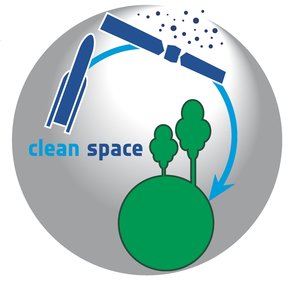Clean Space
Through the Clean Space initiative – another of the cross-cutting Technology themes presented to the 2012 Ministerial Council – ESA will devote increasing attention to the environmental impacts of its own activities, both on Earth and in space.
The first images of Earth from space helped to underscore the fragility of our terrestrial environment, and the need to protect it. Today, environmental legislation is one of the fastest-moving sectors of European and world law. Space industry is not excused from these laws; it must operate within the same jurisdiction as the rest of the planet.
The process of ensuring the Agency’s compliance with current and upcoming regulations marks a first step in the process of transitioning its activities to a more sustainable footing through the adoption of cleaner alternatives to current harmful materials and technologies. In addition, future ESA missions will be evaluated in terms of their environmental impact across their entire life cycle (see right navigation - Cycle of life).
Doing nothing is not an option, risking disruption to space industry supply chains as environmental regulations take effect within the wider economy. But by taking early action, European industry gains first mover advantage, and a new competitive edge. Action is needed to turn a threat into an opportunity.
The need for environmental protection extends to space. The production of space debris will be reduced to protect key orbits, while new technologies will be developed to reduce the current debris population. Even if all space launches stopped tomorrow, the amount of debris will keep on increasing if left alone (see right naviation - the Kessler) Effect box).















 Germany
Germany
 Austria
Austria
 Belgium
Belgium
 Denmark
Denmark
 Spain
Spain
 Estonia
Estonia
 Finland
Finland
 France
France
 Greece
Greece
 Hungary
Hungary
 Ireland
Ireland
 Italy
Italy
 Luxembourg
Luxembourg
 Norway
Norway
 The Netherlands
The Netherlands
 Poland
Poland
 Portugal
Portugal
 Czechia
Czechia
 Romania
Romania
 United Kingdom
United Kingdom
 Slovenia
Slovenia
 Sweden
Sweden
 Switzerland
Switzerland































